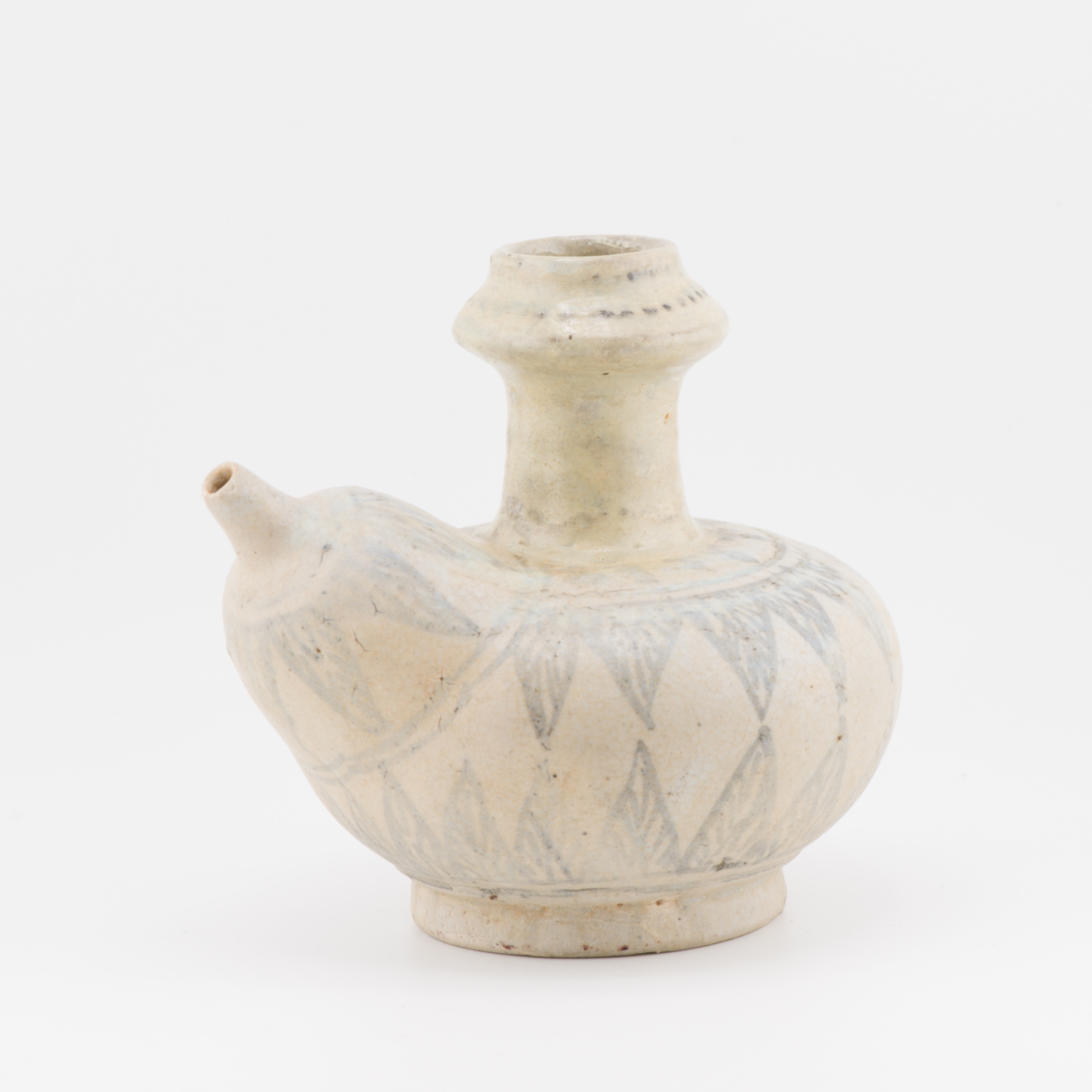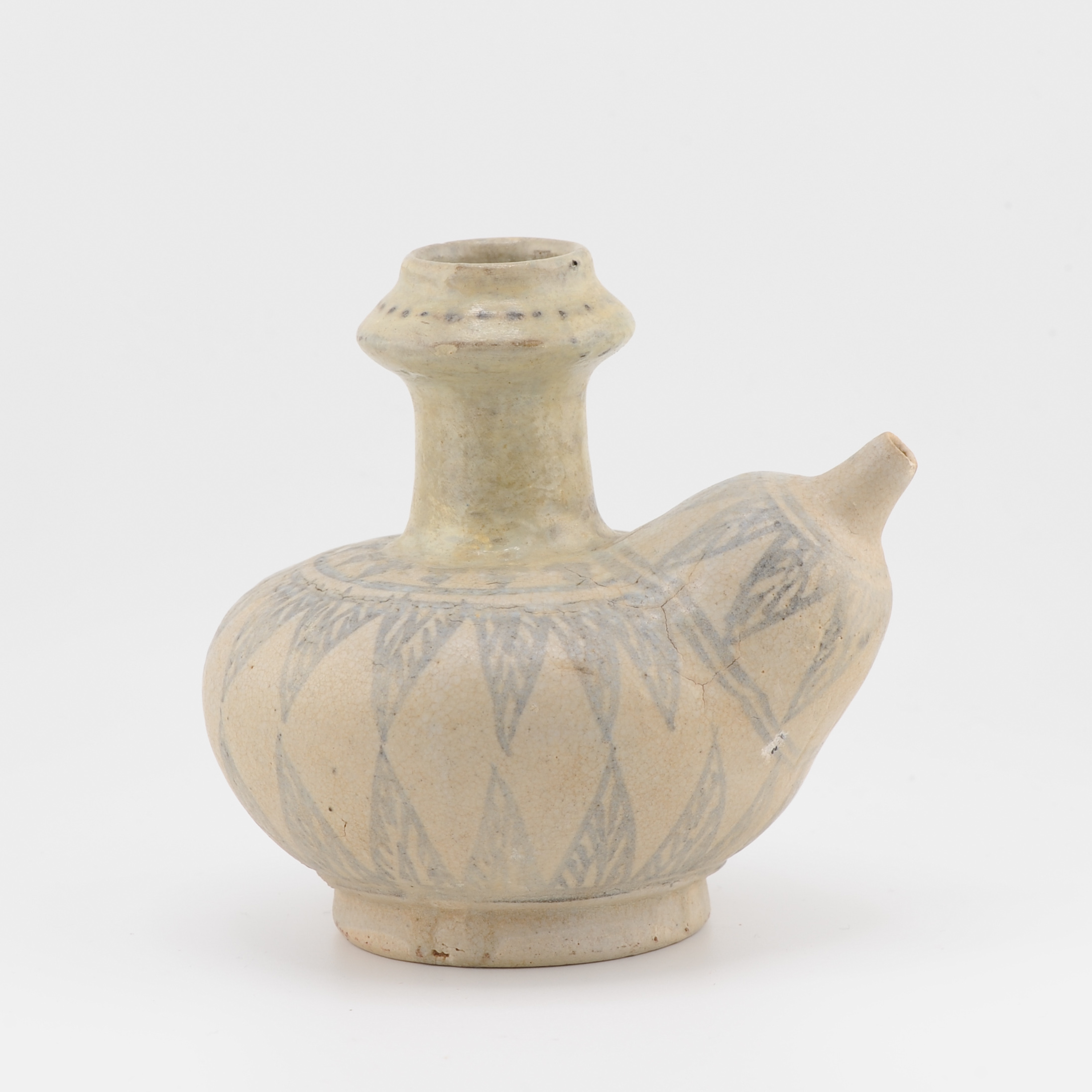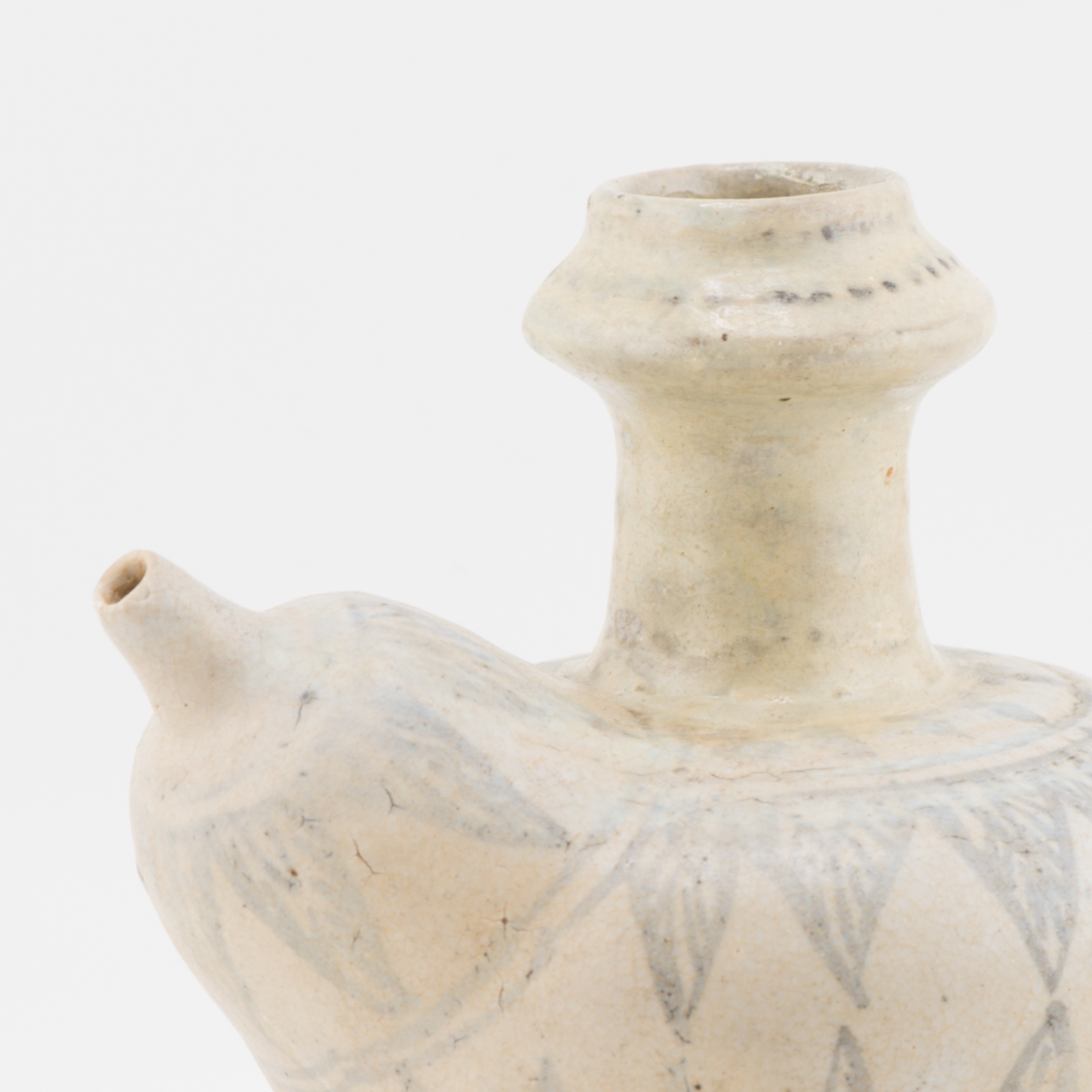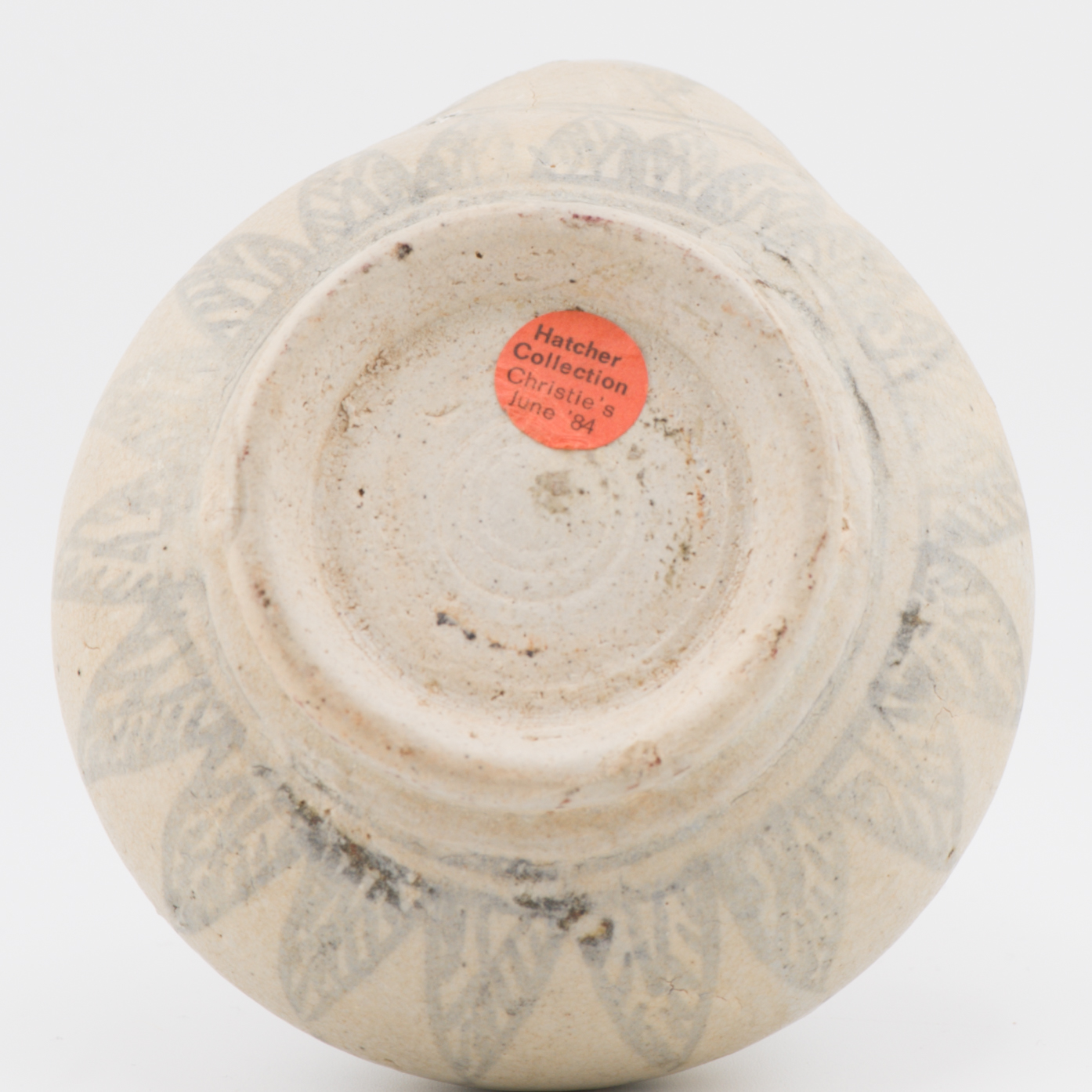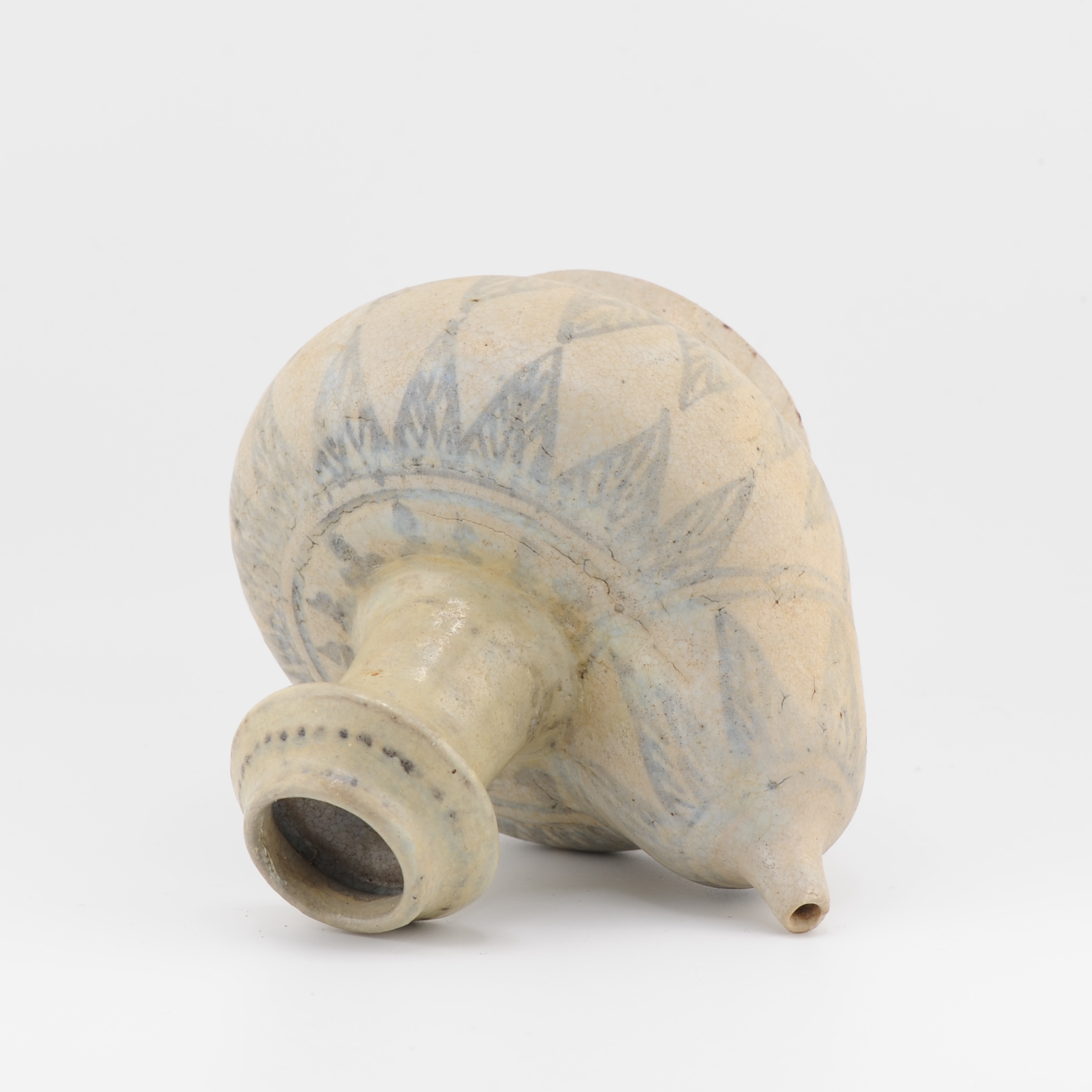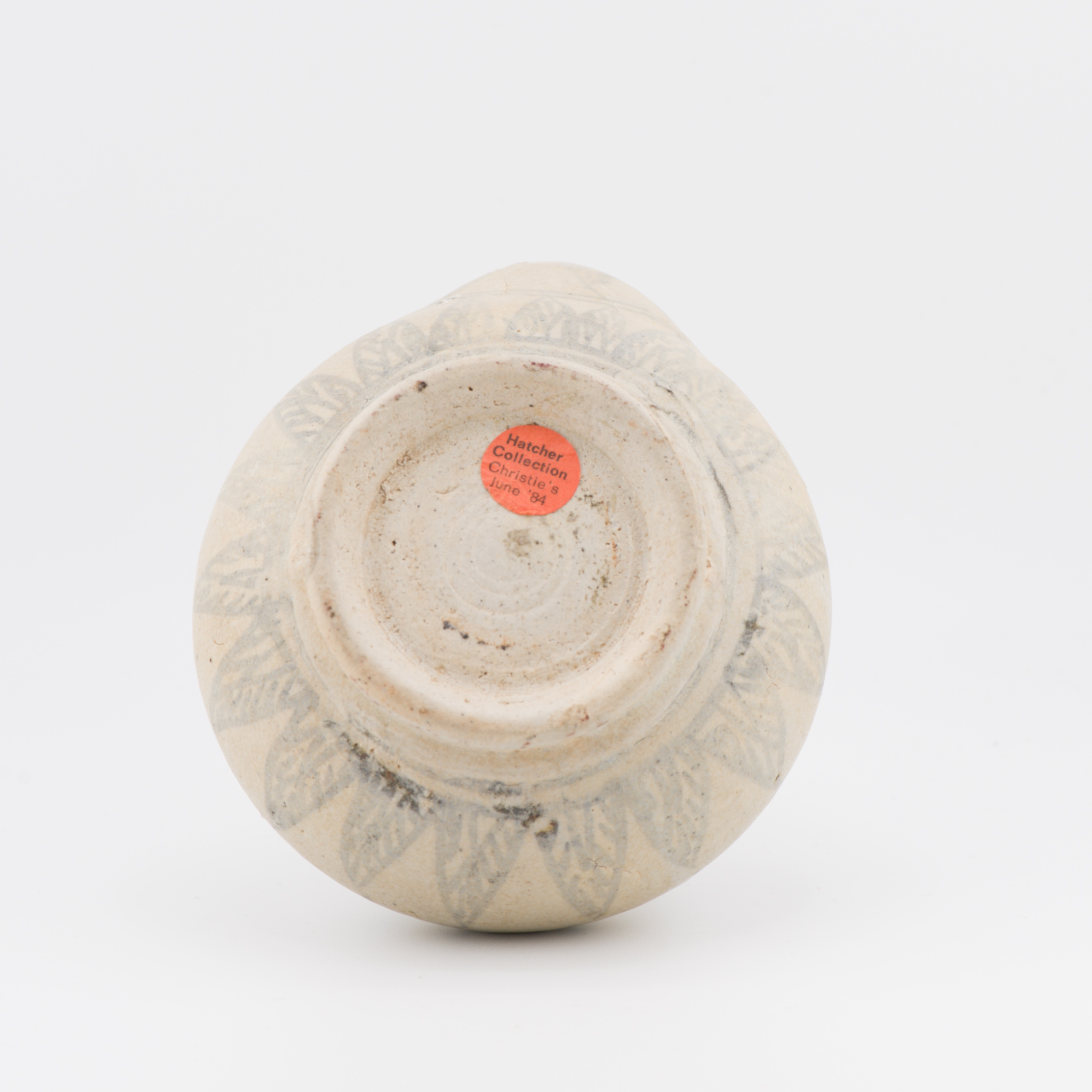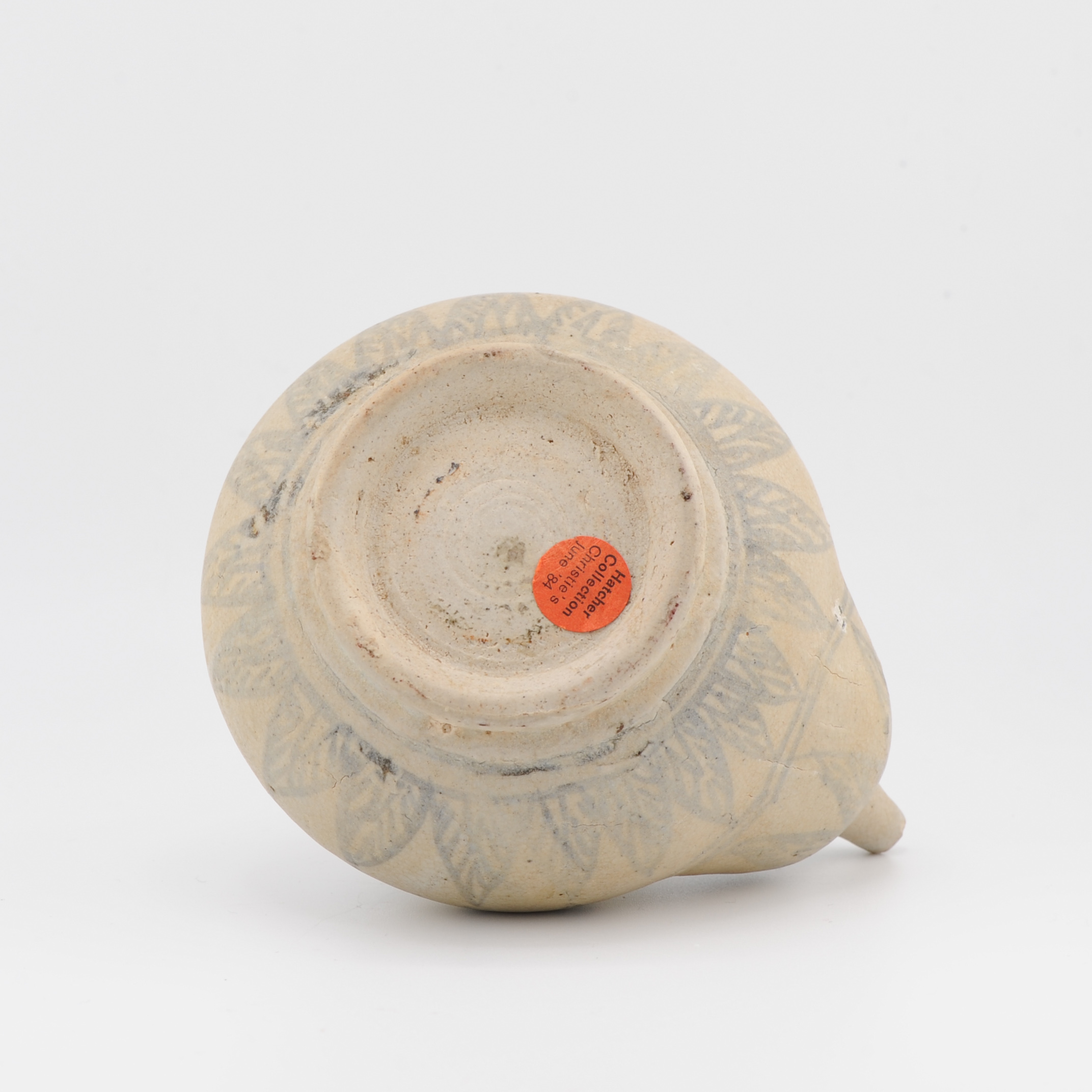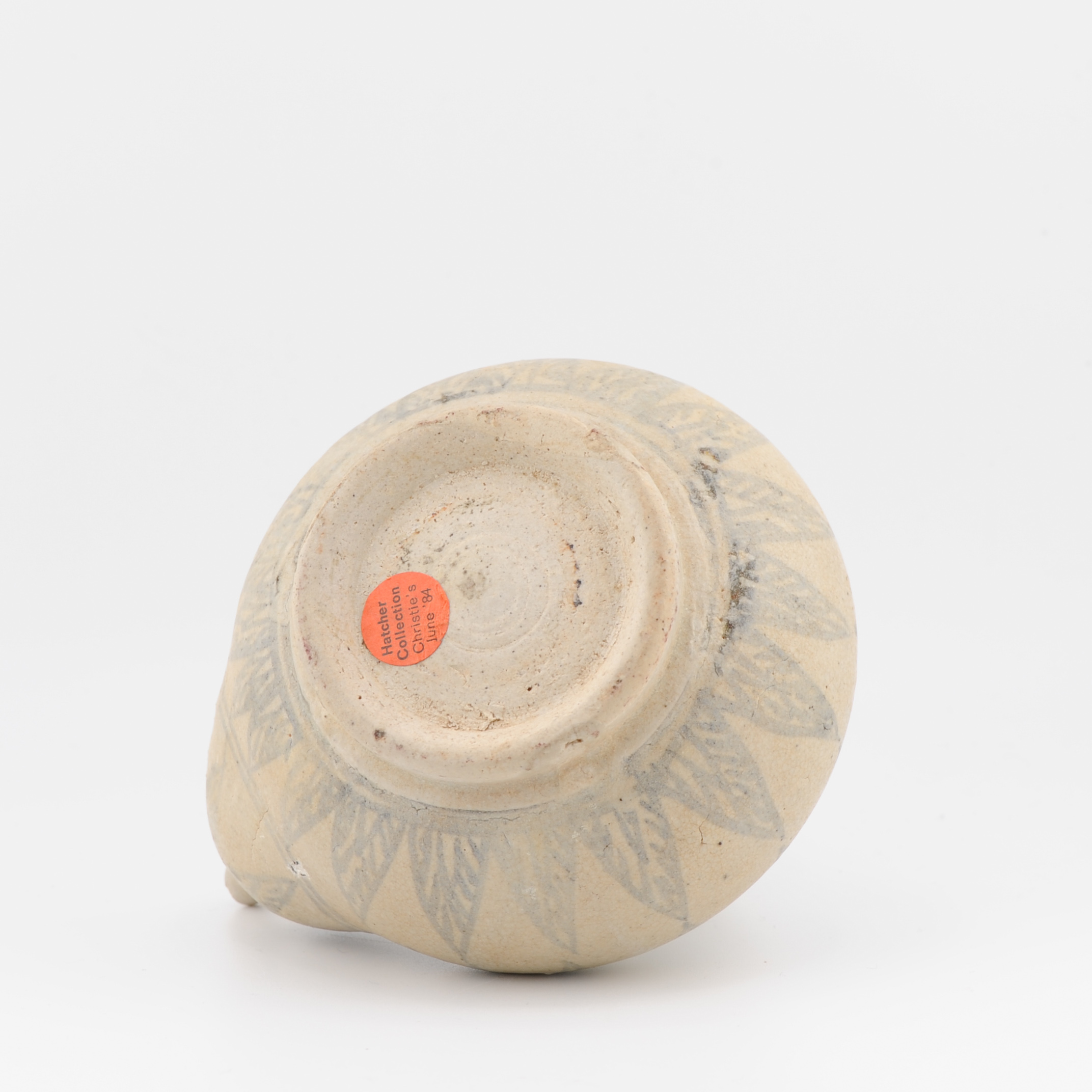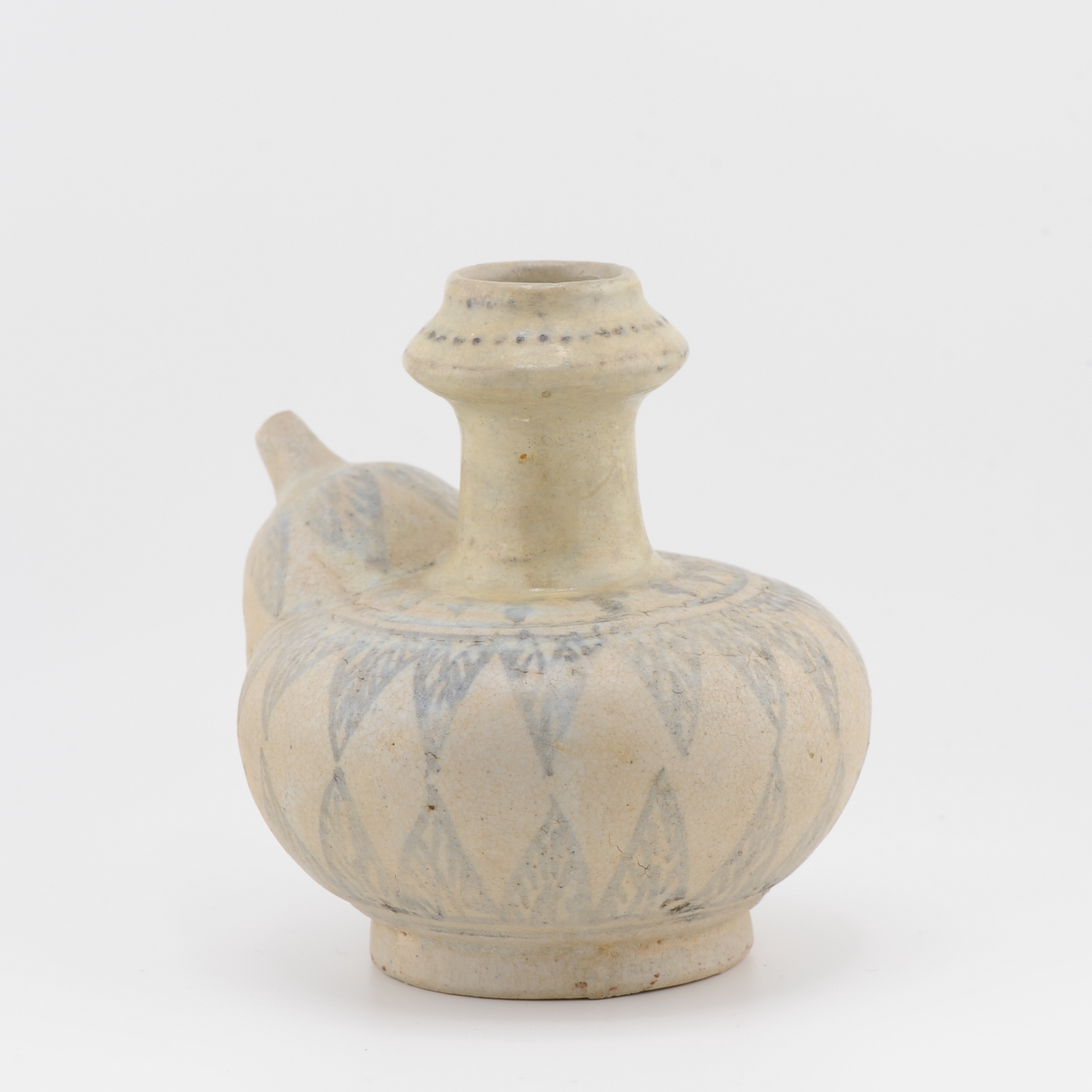Antique Chinese Porcelain Hatcher Cargo Kraak Ghendi porcelain South China
有货
Condition Report: Perfect Condition. Size: 10.5cm
Sharing with you this very nicely decorated kraak Ghendi with a geometrical decoration. The piece was part of the Hatcher Collection. Auctioned by Christies Amsterdam in 1984. It is in very good condition.
The Hatcher Junk
1643-1646
The Hatcher Cargo was recovered from the wreck of a Chinese junk in the South China seas port of Batavia (today Jakarta) by Captain Michael Hatcher in 1983, and was later sold in the Netherlands. They were a small part of what, at the time, was the largest cargo of Chinese porcelain ever recovered in good condition from the sea. Captain Michael Hatcher and his crew brought up about 25,000 pieces of unbroken porcelain from the Hatcher junk those sold through four sales at Christies Amsterdam. The very wide diversity and quality of many of the pieces created great interest, and the date was established by the existence in the find of two pieces with the Chinese cyclical date for 1643.
Captain Michael Hatcher and his crew brought up about 25,000 pieces of unbroken porcelain from the Hatcher junk. Those sold through four sales at Christies Amsterdam. Captain Hatcher returned to the site in 1985 and salvaged over 2,000 more pieces, most of which were sold through a London dealer, Heirloom and Howard. The great majority of the 25,000 pieces were Jingdezhen blue and white, but there were also interesting groups of celadon, blanc-de-Chine, coloured wares and provincial blue-and-white. (Sheaf & Kilburn 1988, pp.8-19)
The ship was almost certainly sailing from China to the Dutch base at Batavia from where cargoes were purchased and transhipped to Dutch East Indiamen for their journey to Europe.
The range of shapes of wares available in the Hatcher junk illustrates what a south Asian porcelain trading vessel of the mid-17th Century might be expected to contain. The cargo also includes objects which normally did not reach the West. This wreck should be seen in its historical context. There was a Dutch pewter jug found in the wreck, which certainly suggests a connection with the Dutch East India Company, (Vereenigde Oost-Indische Compagnie VOC), headquarters at Batavia. The native Ming dynasty was overthrown in 1644 and the resulting civil war substantially upset Chinese trade with the VOC and other western powers. The rebellion interrupted Junk trade to the VOC headquarters at Formosa, the entrepot for ceramics bound ultimately for Batavia. The contents of this wreck suggest a considerable conservatism in the production of Chinese domestic blue-and-white for the first half of the 17th Century. Types of kraak porcelain which were discovered in the Witte Leeuw wreck (which sank in 1613) are closely mirrored in the porcelain of this ship, 30 to 40 years later, it is often said that the Dutch were very conservative in their porcelain taste during the first half the 17th century. It may well be that the VOC went on buying kraak type wares, and the reason why such large amounts of dishes, bowls and jars survived especially in the Netherlands, is that, in fact, there was no export porcelain alternative readily available which the VOC could buy in quantity from Chinese trading Junks. Many of the smaller pieces offered from this wreck bear earlier reign-marks, mostly of the late Ming Emperors none unfortunately of Tianqi or Chongzheng, but equally none with Kangxi marks or cyclical dates for the earliest years of the Manchu Qing dynasty. (Amsterdam 1985, pp.7-8)
The kendi is a drinking and pouring vessel widely used in Asia. Its basic shape is a bulbous body, a long neck and a tubular or breast-shaped (mammiform) spout on the shoulder. The kendi has no handle and one holds it by the neck and drinks from the spout. The kendi seems to have evolved from the Indian “kundika” and spread throughout Asia, changing shape and adapting to existing local vessels for similar use. Kendis of Chinese kraak porcelain of the first half of the 17th century and Japanese kendis of the second half were part of the Dutch East India Company’s (VOC) porcelain assortment for the inter-Asian trade. Apparently, they also reached The Netherlands in small quantities, probably as part of the belongings of retiring VOC employees. They were not used according to their traditional function in The Netherlands, and must only have been decorative items or were filled with flowers as shown on paintings.
——————————————————————————————————————-
We start an auction every week on thursday, ending the next sunday;
https://www.ebay.com/str/antiquefromshangrila?LH_Auction=1
We combine shipment and have over 2200 fixed listings in store,
always good to take a look if you see other items you like to save some shipping:
https://www.ebay.com/usr/theceramics_and_collectibles
All will be packed neat and sent track and trace and insurance. Registered airmail.
Packages are always shipped on the next wednesday.
If there is a specific hurry please contact us.
——————————————————————————————————————
Additional Information
| Region of Origin | |
|---|---|
| Primary Material | |
| China Dynasty Period | |
| Century | |
| Emperor | |
| Decoration Type / Colour | |
| Type | |
| Material | |
| Condition Report |
